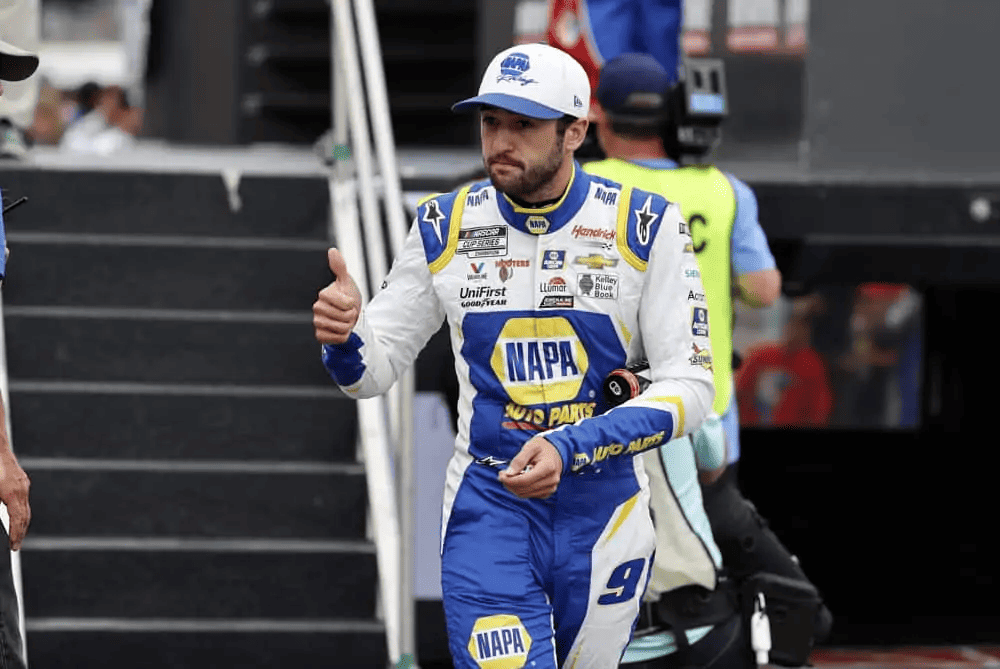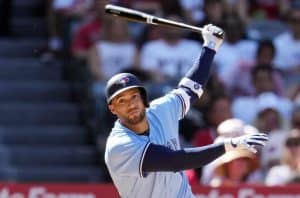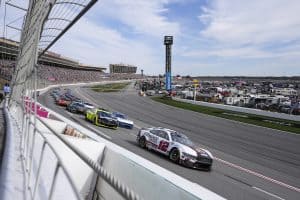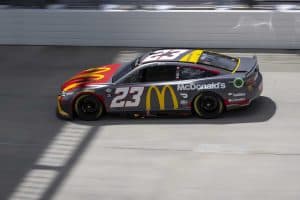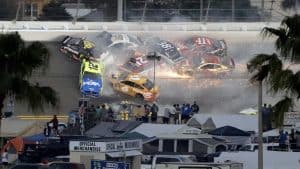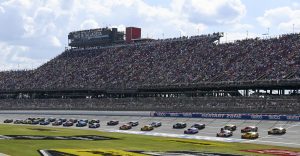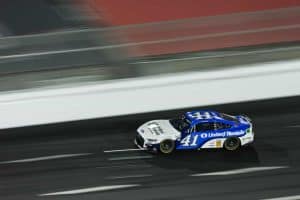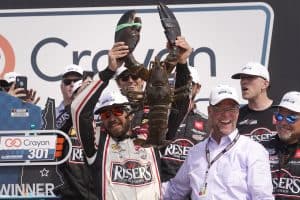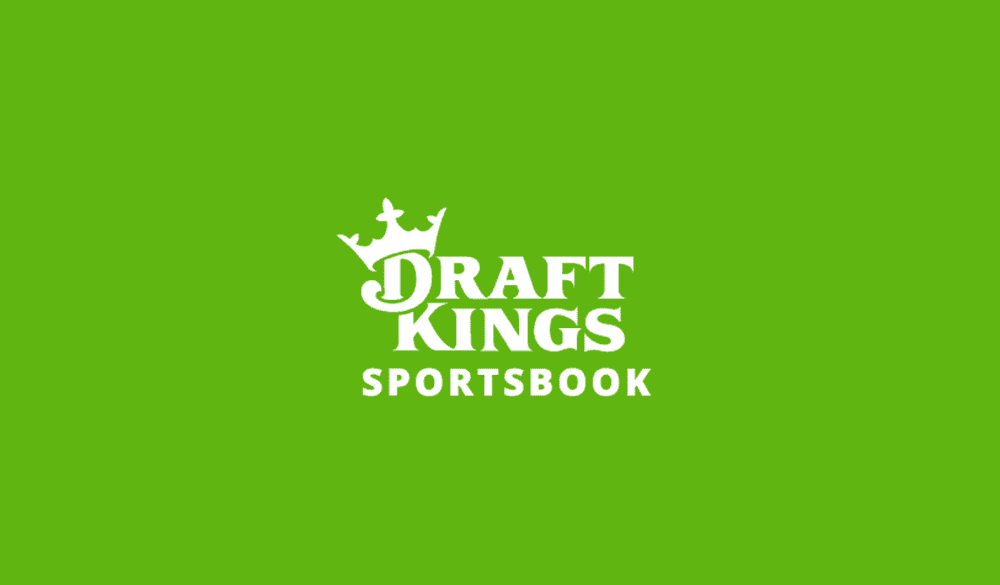Each installment of Isaiah’s Methods & Opinions (IMO) is brought to you by No House Advantage, a cutting-edge daily fantasy site that allows users to risk little and win big in over 30 states. Bet VS. THE HOUSE to win up to 21x your money or play in PICK’EM CONTESTS against other users! New players can secure up to a $100 deposit match by registering with No House Advantage today! This week’s column will focus on how to identify comparator tracks in NASCAR betting — and Chase Elliott’s recent dominance at concrete tracks.
After a one-week hiatus for the NBA All-Star Break, I’m back! We’ll dip into NASCAR betting, as alluded to before the Daytona 500, in order to discuss how to identify comparator tracks. I’ll be here every week for two installments of Isaiah’s Methods & Opinions (IMO)! You can trust me to break down the betting trends and sports news that will give you an edge on the sportsbooks.
No bettor can hit every bet, but the key to profitable sports gambling is to develop a successful process — or method — for identifying sharp wagers. It’s the application of sharp opinions to that method that separates the wheat from the chaff in the sports gambling world. If your priors are wrong, you’ll end up sweating more bets than you must.
This column will help bettors develop sharp methods and come to well-informed opinions.
Isaiah’s Methods: Identifying Comparator Tracks | Sponsored by No House Advantage
Despite what you may have heard, NASCAR is not all about cars taking left turns and driving in circles. Of the 36 points-paying events on the schedule, six (16.7%) feature both right and left turns. Five of those are traditional road courses, including Circuit of the Americans, where Formula 1 holds the United States Grand Prix, and Watkins Glen, where Formula 1 used to hold the United States Grand Prix. Further, the ovals that NASCAR runs vary in size from a half-mile to 2.5 miles in length.
When looking for a track’s comparators, bettors should consider four key factors. The first, and most objective, is the kind of rules package the drivers will run at the event. This distinguishes superspeedways, where potentially unsafe high speeds have forced the sport to use a different engine and aero package, from standard ovals. Bristol Dirt, the lone dirt track on the schedule, requires its own package. The six road course tracks do as well.
Once you have determined the rules package to be used at the event, you should then consider the track’s length, surface and banking. Shorter tracks (one mile or less) and rough intermediates (1.5 or longer but not superspeedways), often force drivers to be more deliberate about their speed. Flat tracks force drivers to use their brakes. Standard intermediates, which are smoother and usually feature high banking, reward raw speed, often a function of a driver’s equipment. Other factors, like whether a track’s surface consists of asphalt or concrete, can help you delineate one oval from another.
Understanding what makes tracks similar is crucial to knowing which drivers will have an edge on any given weekend. You’ll need to be able to do this to turn a profit on your NASCAR bets at places like No House Advantage. However, I’m also here to help you do the dirty work. Here is a list of tracks grouped by similarities — some may appear multiple times as categorization demands.
CONCRETE OVALS (5 Events)
Martinsville (Apr. 16, Oct. 29)
Dover (Apr. 30)
Nashville (Jun. 25)
Bristol (Sept. 16)
DIRT (1 Event)
Bristol Dirt (Apr. 9)
FLAT INTERMEDIATES (1 Event)
Pocono (Jul. 23)
Indianapolis Motor Speedway (N/A)
FLAT SHORT TRACKS (8 Events)
Phoenix (Mar. 12, Nov. 5)
Richmond (Apr. 2, Jul. 30)
Martinsville (Apr. 16, Oct. 29)
Gateway (Jun. 4)
New Hampshire (Jul. 16)
ROAD COURSES (6 Events)
Circuit of the Americans (Mar. 26)
Sonoma (Jun. 11)
Chicago Street (Jul. 2)
Indy Road Course (Aug. 13)
Watkins Glen (Aug. 20)
Charlotte Roval (Oct. 8)
ROUGH INTERMEDIATES (5 Events)
Auto Club (Feb. 26)
Darlington (May. 14 & Sept. 3)
Nashville (Jun. 25)
Homestead (Oct. 22)
SMOOTH INTERMEDIATES (7 Events)
Las Vegas (Mar. 5, Oct. 8)
Kansas (May 7, Sept. 10)
Charlotte (May 28)
Michigan (Aug. 6)
Texas (Sept. 24)
STEEP SHORT TRACKS (2 Events)
Dover (Apr. 30)
Bristol (Sept. 16)
SUPERSPEEDWAYS (6 Events)
Daytona (Feb. 19, Aug. 26)
Atlanta (Mar. 19, Jul. 9)
Talladega (Apr. 23, Oct. 1)
Isaiah’s Opinions: Is Chase Elliott the Man to Beat on Concrete?
Because the NASCAR Cup Series transitioned to a new car last season, the Gen. 7, the results from the 2022 campaign have far more predictive value than the results from any other season. And if one trend became painfully obvious in NASCAR media, it was that Chase Elliott had been anointed the heir apparent to Carl Edwards, otherwise known as Concrete Carl.
Although NASCAR doesn’t often run on concrete, Elliott found a massive edge on those tracks last season. He scored two wins, one runner-up finish and two 10th-place finishes across the five events. He won at the longest two concrete tracks, Dover and Nashville, and finished no worse than second at the highest-banked ones, Bristol and Dover. His average finish at the tracks (4.8) sits atop the field.
Elliott is well on his way to surpassing Edwards’ Cup Series win total on concrete tracks. Edwards won four times at Bristol, once at Dover and never at Martinsville. However, Edwards never got to run at Nashville in the Cup Series. In the Xfinity Series, he recorded five wins at Nashville, three wins at Dover and one win at Bristol. Elliott, just 27 years old, currently boasts two Cup Series wins at Dover, one win at Nashville, one win at Bristol and no wins at Martinsville.
However, bettors looking to exploit the idea of comparator tracks shouldn’t plan to just spam Elliott at every concrete oval. The books got quite aggressive in pricing him by the end of the year — Elliott opened at 15-2 for the win at the Bristol Night Race. He led an impressive-but-not-elite 16.8% of all possible laps on concrete tracks last year, 67.5% of which came at Martinsville. Elliott should open with plenty of value at Martinsville because of his failure to win there last season, but he might be worth fading at Nashville or Bristol if his odds open at a short enough price.
Denny Hamlin and Christopher Bell also have a claim to Edwards’ title. Hamlin didn’t win any of the races on concrete last year but managed to lead a larger share of the laps (18.3%). Bell finished fourth at Bristol and scored a win in the fall Martinsville race, the last two concrete events, and led 29.3% of the laps in those races. He hadn’t led a race at a concrete track last year before Bristol, but his performance in the two events was good enough for him to earn the third-largest share of laps led at concrete tracks in 2023 (13.9%).
Elliott, Hamlin and Bell all make for smart plays on concrete tracks — the three drivers combined to win 60% of the races and lead 49% of the laps. The only question is whether the books and NASCAR DFS sites like No House Advantage will leave value on Them. For the sake of our bankrolls, let’s hope they do.
